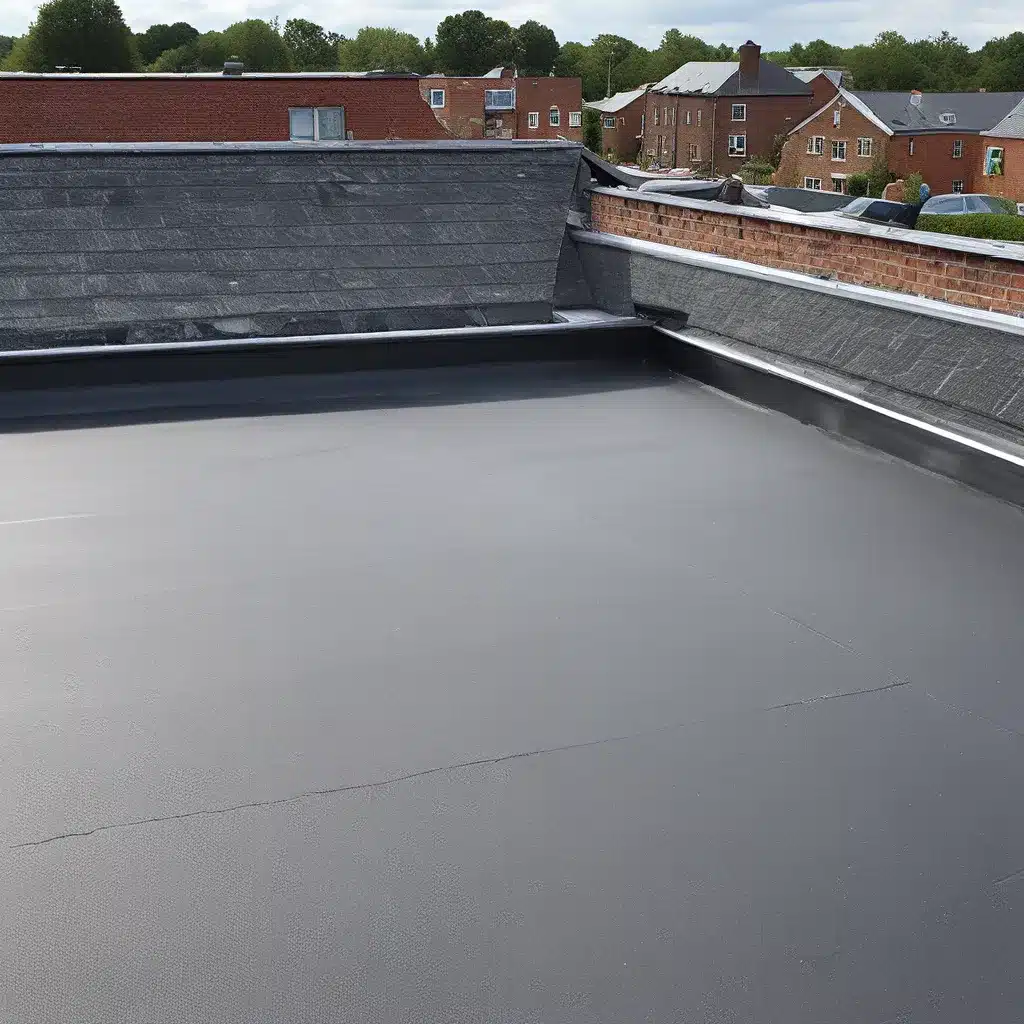
As a self-proclaimed ‘roof enthusiast’ (yes, that’s a thing!), I’ve had my fair share of experience dealing with the quirks and challenges of flat roofs. Whether you’re a homeowner, a commercial property manager, or just someone curious about roofing, you’ve likely encountered your own set of flat roof conundrums. Fear not, my friends – I’m here to share my insights and help you navigate the world of flat roofing with confidence.
Flat Roof Fundamentals
Let’s start with the basics. Flat roofs, as the name suggests, are roofs that have a minimal slope or no slope at all. They are a popular choice for commercial buildings, modern homes, and structures with limited vertical space. Compared to their sloped counterparts, flat roofs offer a unique set of advantages and considerations.
One of the primary benefits of a flat roof is the versatility it provides. They can be used as outdoor living spaces, providing an opportunity to create rooftop gardens, lounging areas, or even small-scale agriculture. Additionally, flat roofs are often more energy-efficient, as they can accommodate solar panel installations or green roof systems that help regulate the building’s temperature.
However, the very feature that makes flat roofs so appealing – their flatness – can also present some challenges. Proper drainage and waterproofing are crucial to prevent leaks, standing water, and potential structural damage. Flat roofs also tend to accumulate more debris and require more frequent maintenance to maintain their integrity.
Navigating Flat Roof Conundrums
Now, let’s dive into some of the common flat roof conundrums and explore strategies to overcome them.
Conundrum #1: Drainage Dilemmas
One of the most significant issues with flat roofs is ensuring proper drainage. Inadequate drainage can lead to standing water, which can compromise the roof’s structural integrity, promote mold and mildew growth, and even increase the risk of roof collapse during heavy rainfall or snowmelt.
To combat this, it’s essential to carefully design and install the roof’s drainage system. This may involve incorporating strategically placed roof drains, sloping the roof towards the drains, and using high-quality, durable materials that can withstand the elements. Regular inspection and maintenance of the drainage system are also crucial to keep it functioning correctly.
Conundrum #2: Waterproofing Woes
Closely related to the drainage dilemma is the challenge of waterproofing. Flat roofs are more susceptible to leaks and water infiltration than their sloped counterparts, as they lack the natural runoff that helps shed water.
To address this, reliable waterproofing becomes essential. Membrane roofing systems, such as EPDM (Ethylene Propylene Diene Monomer), TPO (Thermoplastic Polyolefin), or PVC (Polyvinyl Chloride), are popular choices for flat roofs. These materials are designed to create a seamless, watertight barrier that helps prevent leaks and protects the underlying structure.
Regular maintenance and inspections are also vital to ensure the waterproofing remains effective over time. Addressing any cracks, blisters, or punctures promptly can help extend the life of the waterproofing system and avoid costly repairs down the line.
Conundrum #3: Structural Stress
Flat roofs often face greater structural stress compared to sloped roofs, particularly when it comes to snow and ice accumulation. The lack of natural sloping means that heavy snowfall can put a significant strain on the roof’s structural supports, potentially leading to sagging, cracking, or even collapse.
To mitigate this risk, it’s essential to ensure the roof’s structural integrity from the outset. This may involve using reinforced materials, incorporating additional support beams, and carefully calculating the roof’s load-bearing capacity. Regular inspections and maintenance are also crucial to monitor for any signs of structural stress or damage.
Staying Ahead of the Curve
As with any aspect of home or building maintenance, staying informed and proactive is the key to managing flat roof conundrums. Educating yourself about the latest roofing technologies, industry best practices, and emerging trends can help you make informed decisions and stay ahead of potential issues.
Additionally, working with experienced roofing professionals can be invaluable. These experts can provide tailored advice, design solutions, and ongoing support to help you navigate the unique challenges of flat roofing.
Remember, every building and its roofing needs are unique. What works for one property may not be the best solution for another. Approach your flat roof challenges with an open mind, a critical eye, and a willingness to explore innovative and personalized solutions.
Embracing the Flat Roof Future
As we look to the future, the prevalence of flat roofs is likely to continue growing, driven by factors like urban density, sustainability, and architectural trends. This means that the demand for effective flat roof solutions will only increase.
By staying informed, proactive, and partnering with the right roofing experts, you can confidently tackle any flat roof conundrum that comes your way. Embrace the unique opportunities that flat roofs offer, and celebrate the joy of a beautifully maintained and functional flat roof.
So, let’s raise a (metaphorical) glass to the wonders of flat roofing – may your drainage systems flow freely, your waterproofing remain impeccable, and your structural supports stand tall. Cheers to conquering the flat roof conundrum!